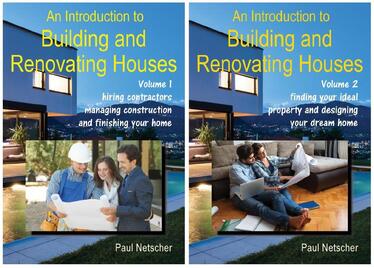A house that can easily be altered to suit changing needsYour circumstances change with time. Families grow as you have children, then, they shrink as children leave to lead their own lives. But, even as your children grow-up they have different needs and interests. They’re not going to be that baby in the cot which is close at hand for long, they’ll eventually become teenagers who want their own space to enjoy with friends. As you age you have different needs, maybe now you leave home every day for an office, but at some stage you’ll retire and spend more time with your hobbies, or even work from home. You’ll eventually become infirm and steps might no longer be easy for you. Older parents could depend on you more (especially if something happens to one parent) and they might want (or have to) move in with you. When the time comes for these changes you may need to move to another house, or renovate your existing home to adapt it to these changes. But you can, with a little forethought and planning, ensure that your house is easily adaptable for many of these changes. If you’re becoming advanced in age you should design your house with this in mind. You don’t have to include all the features now that a mobility impaired person needs, but getting the basic layout right now so that it’s easily adaptable later will save future expense and work. Designing the house so that children can have their own space, even separate entrances, could mean that once they’ve left you can convert that space to rent out. Being able to shut this area off from the rest of the house may be beneficial. Consider how you could re-purpose bedrooms later when the children have left to become hobby rooms, home offices or work rooms when you retire. With a multi-storey house it’s often useful to have at least one bedroom downstairs. If someone in the family has an injured leg they probably can’t easily climb steps. But, when you’re older you may find it easier to live on the ground floor. We’ve always found a spare bedroom with a bathroom on the ground floor useful for elderly visitors and relatives. Children probably want a swimming pool and a garden to play in when they’re young, but you’ll find that they quickly grow up and you’re left maintaining the swimming pool and garden that they seldom use. Positioning your home in the right place on your property may allow you to divide the land and sell a portion of garden, or even build a flatlet or a new home for you. But, it’s not just you and your family that’ll change. With time, the cost of utilities increase, there’ll be new technology and new appliances. The cost of labour will increase so it’ll be more expensive to hire cleaners and gardeners. Fashions change and furniture, fittings and colours which were once modern aren’t suitable anymore. Houses with a neutral decor can often be easily adapted to suit changes in fashion, tastes and furniture. It’s also about the home being adaptable for future buyers. For instance, you might desire a home theatre room, but a future buyer might not. If you’ve designed the room with no windows it’s going to be difficult for the next person to use the room for something else. The same goes for converting studies to another bedroom, or vice versa, unless they’ve been planned to be easily adaptable. It's important to consider the layout of the interior of the house, the location and sizes of windows, the position of cupboards (or future position), the location of electrical sockets, cable outlets, colours of tiles and bathrooms, and more. How easily can rooms be transformed to another use or to a different style? Can you see yourself being able to live in your home when you're older? Don't only design a home that's right for now - design it for the future as well. For more valuable tips and advice read: 'An Introduction to Building and Renovating Houses - Volume 1 Hiring Contractors, Managing Construction and Finishing Your Home' and 'Volume 2 Finding Your Ideal Property and Designing Your Dream Home'
This is an extract from: 'An Introduction to Building and Renovating Houses Volume 2' by Paul Netscher. Available in paper or eBook from Amazon.com, Amazon UK, Amazon CA, Amazon AU and all online bookstores. To read more © 2019 This article is not to be reproduced for commercial purposes without written permission from the author.
0 Comments
Leave a Reply. |
AuthorI’m a construction professional, author of several successful construction management books, and a home owner. I’ve made mistakes in construction management, I’ve seen others make mistakes, but importantly I’ve had multiple successful construction projects and I’ve learned from the mistakes. I want to share these lessons and my knowledge with you. Also available from:
Amazon Au, Amazon DE, Amazon ES, Amazon CA, Amazon IT, Amazon FR, Amazon NL, Amazon India and 'An Introduction to Building Houses - Volume 2 Finding Your Ideal Property and Designing Your Dream Home'
Archives
July 2024
CategoriesWe welcome genuine comments, especially comments that add additional information to the subject matter in the article. We however reserve the right to remove inappropriate comments, which includes comments that have nothing to do with the subject, comments that include inappropriate language, and comments that are an advertisement for a product or company, or which include an advertising link. Comments must be in English. We will not enter into discussion on why a particular comment was removed.
|




 RSS Feed
RSS Feed


